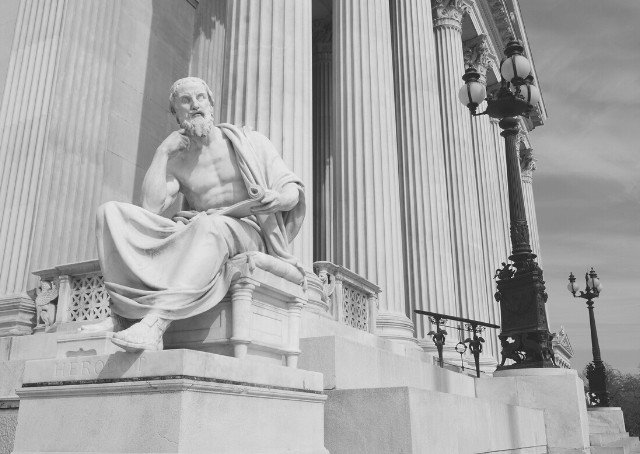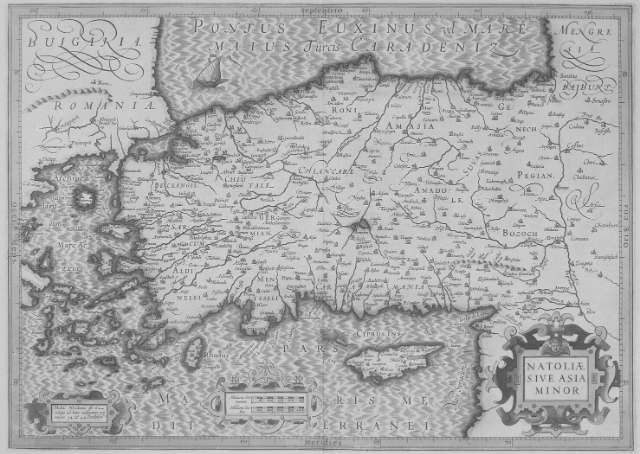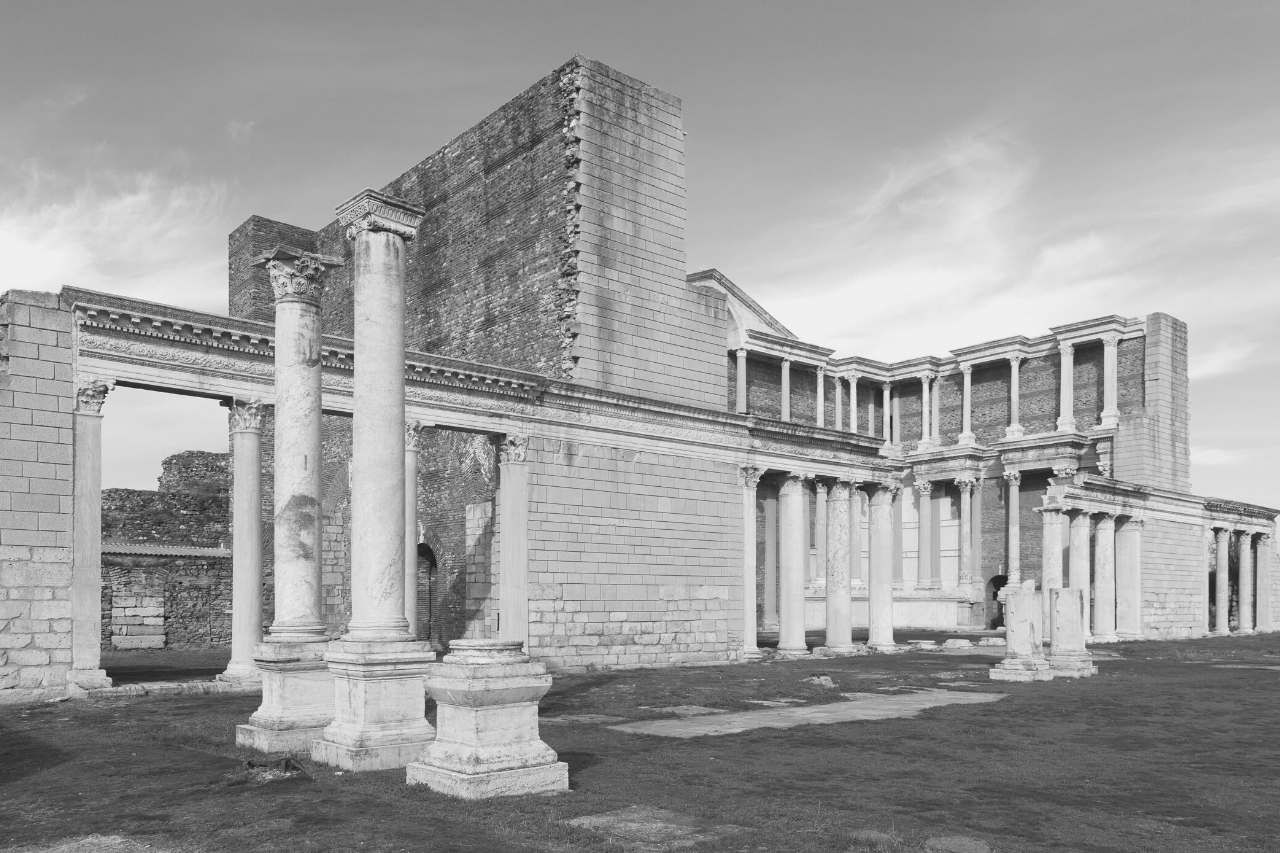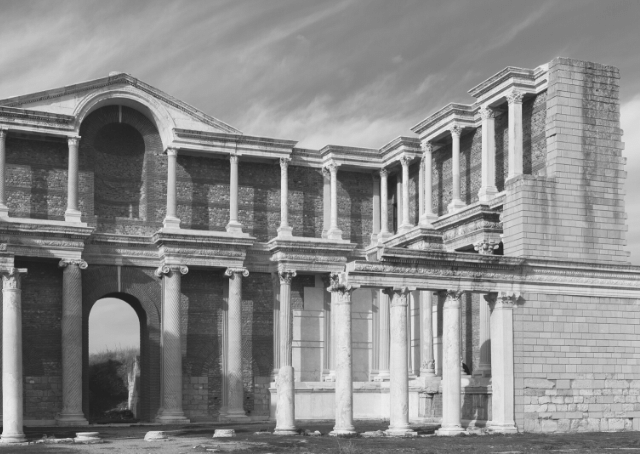Lydians: The Rise of One of History’s Richest Civilizations
The Lydians lived in ancient Anatolia, and their land started at the Aegean sea and stretched eastward. They occupied the Cayster and Hermus river valleys.
According to the Greek historian Herodotus, the Lydians were commercial people. They had customs like the Greeks, but the Lydians were the first to establish permanent retail shops.
The Lydians civilization came to prominence in the 7th century BC. It was then that the famous King Gyges started his dynasty, known as the Mermnads.
Who Were the Lydians?
Herodotus gives a pseudo-historical account of Lydia. This account starts in the early Iron Age (1200 – 700 BC), where the Atyad kings made way for the Tylonid kings at the time. The last Tylonid king was Candaules, and his bodyguard Gyges assassinated him, married his widow, and founded the Mermnad Dynasty.
Our modern word “tyrant” comes from the Greek turannos, taken from a Lydian word. The Lydians first used it to denote Gyges. Why? Because Gyges seized absolute power by murdering his predecessor.
Herodotus reports that in about 687 BC, King Gyges created the new nation of Lydia. It was in the western part of modern Turkey where the Hittites had reigned before the Dark Age. People also referred to it as Maeonia.
The Neo-Babylonians were not very strong during that time, resulting in the collapse of the Assyrian Empire.
The Lydian kings, in chronological order, were:
Gyges – 680 – 652 BC
Ardys – 652 – 625 BC
Sadyattes – 625 – 610 BC
Alyattes – 610 – 575 BC
Croesus – 575 – 546 BC
The Lydian people were pretty friendly with the Greek cities along the coast of Asia Minor. That friendship started from the time of Gyges and went on. Greeks occupied its Aegean shores as early as the 13th century BC. Lydia prospered due to its natural resources. Its position on trading routes between Asia and the Mediterranean also helped.
Country
The country of Lydia had its own language, derived from Indo-European and originated from Hittite, Palaic, and Luwian. It had an alphabet like the Greek, which was in use until the 1st century BC. Linguistic science does not know much about the Lydian language. We only know that a lot of the words are clearly of Indo-European origin.
The main influence was Hittite, but the language had a lot of its own features. Lydian phonetics was much more complicated than Hittite. Its consonant system had several palatals for [d], [l], [n], [s], and [t], and the nasal vowels [a] and [e] appeared. Lydian morphology also differed from the Hittite.
The country referred to as “Lud” in the Old Testament (Ezekiel 30:5) was Lydia. Some versions of the Bible actually have Lydia. Greek writers state that the name Lydians derived from a former king. According to Genesis 10:22, Lud was a grandson of Noah: the child of his son Shem. The Bible mentions them again in Isaiah 66:19 and also in Ezekiel 27:10.
Where Were Lydians Located?
The Lydians immigrated to Asia Minor in the 7th century BC. Lydia had the perfect position for trade as it was located between the Persian and Greek worlds.
Lydia’s boundaries varied at different times. The nation started as a small kingdom in the east of the Ionian colonies. The River Caicus separated the region from Mysia and the Troad to the north.
There is an academic dispute regarding Catacecaumene, an inland volcanic area on the upper Hermus River. Some scholars place it in Lydia, while others say it was part of Mysia as Both Lydia and Mysia claimed some of the territories.
Lydia’s most eastern point was the sacred mountain Dindymus, which Lydians dedicated to the goddess Kuvav (Greek Cybele). The nation of Phrygia lay to the east and the Aegean Sea on the west. During the Persian dominion period, it extended to the south as far as the River Meander. There’s a possibility that it reached Mount Messogis.
Lydia was a land of several fertile river valleys. The Hermus was in the north, while the Cayster Valley, between the Messogis and Timolus, was in the southern part of Lydia.
We find Caria on the south bank of the River Meander and south of Miletus. The Carian towns of Tralles, Nysa, Aromata, and Magnesia on the Meander may have been Lydian towns. Scholars are still debating the issue. Strabo mentions the Meander as the frontier between Caria and Lydia.
With its capital at Sardis, Lydia rose to great prominence. This city was in what is now Manisa Province in Western Turkey, near the town of Sart. Sardis was on a strategic site and drew on the mineral resources and timber of the mountains.
There were productive farmlands on the plain, and freshwater from springs, streams, and lakes watered them. There was also trade from the coast to the interior. The natural defenses of the impenetrable citadel were there to protect Sardis. The city also had gold from some of the finest sources in antiquity.
The last king, Croesus, extended his empire through several successful wars. He conquered the entire western part of Asia Minor. Even now, he’s known for his enormous wealth and was also the inventor of an ingenious currency system.
What Are the Lydians Most Famous For?
The Lydians were famous for the last king, Croesus, son of Alyattes. He obtained enormous wealth and fame during his lifetime. He inherited much of it from his predecessors and also made his kingdom richer through conquest. To this day, people use the expression “as rich as Croesus,” which is used when referring to a person with vast wealth.
The Lydians are also famous for inventing money as a medium of exchange. They made the first coins from electrum, an alloy of gold and silver. They also produced the first pure gold and pure silver coins during the reign of Croesus.
Empires and cities had done without money for thousands of years. Coinage gained popularity after the introduction of these coins, and these first coins had many of the same features as modern coins. They were a specific measured size. They were also stamped with images of animals, rulers, and mythical beasts.
Coinage may have developed in Lydia because that country controlled sizable gold supplies. It was also a trading center. Before the introduction of coins, people weighed out pieces of gold or silver or bartered. Lydian coinage had equal weights, so scales were no longer necessary for transactions.
Lydia also became famous through Greek mythology. Tantalus was the primordial ruler of mythic Lydia for the Greeks, and Niobe was his proud daughter. The Greeks also said the King Midas washed away his Midas touch in the river Pactolus. This river had significant gold deposits, which added to the wealth of the legendary King Croesus.
At one point, Lydians were the wealthiest people in Asia. Their nation became the most luxurious and affluent in that region. Lydia is also famous for Aesop, who lived under the patronage of Croesus.
Lydian craftsmen were leaders in working and refining gold. The marvelous silver and gold jewelry found as grave goods in Lydian tombs is telling as it gives a rich impression of the magnificence that their privileged classes displayed. These finds and the scarcer items from Sardis have parallels with other cultures. They resemble the gold votives excavated in the sanctuary of Artemis at Ephesus.
History remembers Sardis for the many sieges it sustained, during one of which Cyrus took it. Scipio defeated Antiochus the Great at Magnesia ad Sipylum, at the foot of Mount Sipylus. Together with Philadelphia and Thyatira, this city was a seat of the seven churches of Asia.
Culture
In December 2016, archaeologists found a Lydian kitchen with all the utensils in it. The excited team was able to study the food and drink traditions of Lydians. For example, they found oyster shells, which suggests that the Lydians had a food culture based on Lake Manyas. They also found organic remnants from various animal and fish bones from different eras, pots, pans, and two cookers.
The Lydian culture was Anatolian. But by the sixth century BC, the state maintained strong contacts with Greek cities to its west. It seems to have had a lot of contact with Phrygia.
Archaeologists found Phrygian ancient safety pins, metal vessels, pottery, and decorated roof tiles. Lydian pottery is distinctive. One of the unique identifying features is a shape called a “lydion.” This shape seems to have contained a cosmetic.
Lydians enjoyed one of the highest standards of living of ancient times as they had the advantages of favorable location and plenty of resources. They were well-known for their gold and the magnificence of their armored chariots.
Other nations envied the luxury items that the citizens owned. Lydians had much wealth and opportunities for leisure. Yet, they succeeded in making only one lasting contribution to civilization. This contribution was the invention of money.
The Lydian Empire
Herodotus was the one who came up with the concept of a Lydian Empire. He portrayed it in classical literature only. It’s important to note that he wrote his account more than a century after the events he claimed to narrate.
Herodotus reports that Gyges, the first king of Lydia, marched on Smyrna and Miletus. He captured the city of Colophon. Gyges was the founder of the Lydian Empire, which began with the falling of the Phrygians and the neo-Hittites.
The major cities in the Lydian Kingdom included Magnesia and Philadelphia. None of these major cities exist today. Sardis is now a part of modern-day Turkey.
The life of Sardis started as a hilltop fortress where the king of Lydia resided. The city developed into two parts, and the palace stood in the upper town. This part of town was for members of the royal family and wealthy citizens, while the lower town was on the banks of the Pactolus River, where the ordinary citizens lived.
Herodotus says that Croesus went to battle soon after assuming the throne of Lydia. He launched a military campaign against the Greeks and first attacked Ephesus and then continued his campaign against Ionia city by city. Then he attacked the cities of Aeolis in turn, conquering much of the western coast of Anatolia.
One thing, in particular, stands out about the Lydian Empire: it was filthy rich. Royal families, nobles, and wealthy aristocrats lived throughout the empire. It thrived until 546 BC when Cyrus defeated Croesus. After that, the Lydian Empire became a province of the Persian Empire.
The Ancient Lydian People
The Lydian tribes assimilated within the local Hittite population. They took on some aspects of its language and had a rigid social stratification system in place. The king ruled at the top, followed by the ancient nobility, then the upper class, and then the priestly class. The working class included craftsmen, merchants, serfs, free men, and slaves.
Religion
Greek mythology had a strong influence on the Lydian religion. The ancient Lydian people were polytheistic, with many gods and goddesses. Lydian religion was also nature worship, and at times it became wild and sensuous. Like the Phrygians, they worshipped Medeus, the supreme god, and Attis, the sun-god — Attis was at once the son and bridegroom of the goddess Cybele.
Like the neighboring Carians and Lelegians, they worshipped Cybele. Some historians have listed their religion as a cult.
Cybele was the mother goddess of Anatolia. As the “Mother of Everything,” her power was unlimited. She was the goddess of chastity and nature and the protector of sailors and wild animals.
In the Phrygian tradition, Cybele was the mother of all the gods. She was also the goddess of fertility, motherhood, and the mountain wilds. Cybele had a close association with several Greek goddesses. For example, she’s linked to Rhea, the Greek mother of the gods, and she also had an affiliation with Demeter, Aphrodite, and Artemis.
The Lydians also worshipped the goddesses Artemis and Kore, also known as “The Maiden.” Evidence of the worship of gods in the Lydian era is more elusive than that of goddesses.
Zeus appears in Lydian funerary texts and votives as well. Apollo received sumptuous offerings from Gyges, Alyattes, and Croesus. They made these offerings in his sanctuaries at Didyma and Delphi. Lydian texts imply the worship of Bacchus, and there is a reference to Hermes in a poem by an ancient Ephesian.
Conclusion
The Lydian Kingdom fell to the Persian Empire in 546 BC. However, Libyans managed to push against Persian rule. The Greeks also tried to subdue them and were successful in 334 BC, when they sacked Sardis.
Today, these mighty people are best known for the introduction of the Lydian coin. They’re also famous for the last king of the Mermnad Dynasty, Croesus.








